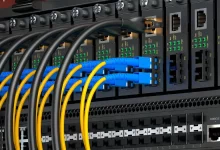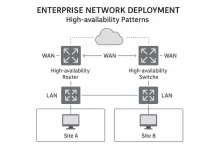Lost your Windows 10 product key somewhere between the depths of your messy desktop drawers and the back of that dusty notebook? Fear not, digital explorer! Whether you’re planning a clean install, troubleshooting activation headaches, or just curious about how your PC’s license magic works, this guide will have you uncovering your 25-character Windows 10 key faster than you can say “Tech-savvy hero.” We’ll walk through four different methods—each with its own flair—so you can pick your favorite and get back to conquering the digital world. Let’s dive in!

1. The Command Line Treasure Hunt
If you love feeling like a cyber pirate searching for buried treasure, the Command Prompt (or PowerShell) method is for you. In just a single line of text, you can summon your Windows 10 product key from the system’s hidden vault.
Step-by-Step:
- Open Windows PowerShell or Command Prompt as an administrator. To do this, right-click on the Start button and select
Windows PowerShell (Admin)orCommand Prompt (Admin). - Type the following command and press Enter:
wmic path softwarelicensingservice get OA3xOriginalProductKeyAlmost instantly, you’ll see a 25-character string—your Windows 10 activation key—appear beneath the “OA3xOriginalProductKey” header. Congratulations, you’ve just completed your first digital heist!
Note: Some OEM or volume-licensed systems store a blank or generic key in this location. If that happens, don’t panic—try one of the other methods below.
2. The Registry Scroll of Secrets
Registry editing might sound like sorcery, but it’s really just a matter of knowing where to look. If the command line doesn’t reveal your key, the Windows Registry might hold the goods—though it’s not guaranteed to always show the correct OEM or volume-license key.
Step-by-Step:
- Press
Win + Rto open the Run dialog, typeregedit, and hit Enter to launch the Registry Editor. - Navigate to the following path:
HKEY_LOCAL_MACHINE\SOFTWARE\Microsoft\Windows NT\CurrentVersion\SoftwareProtectionPlatform- In the right-hand pane, look for a value named
BackupProductKeyDefault. If you’re lucky, the data field will display your 25-character Windows 10 key. If it’s blank or shows a generic placeholder, move on to the next method.
Tip: Be careful not to accidentally change any other registry values—modifying random entries can cause system instability. When in doubt, just observe.
3. The Third-Party Tool Shortcut
For those who prefer a visual interface and dislike typing code, third-party utilities can save the day. NirSoft ProduKey is a lightweight, free tool that reveals product keys for Windows and other Microsoft products—plus Adobe, Autodesk, and Office if installed.
Step-by-Step:
- Visit the official NirSoft website and download
ProduKey.zip. (Disable your antivirus temporarily if it flags the download—ProduKey is safe, but some security programs throw a false positive.) - Extract the ZIP file and run
ProduKey.exe. - Within seconds, you’ll see a list of installed products and their keys. Locate your Windows 10 entry and copy the 25-character code. Easy peasy!
Heads-Up: On OEM systems or those activated with a digital license, ProduKey might only show a generic or partial key—so you may need to fall back to method #4 if the display is incomplete.
4. The VBS Script Magic Trick
If you’re in the mood for a little scripting wizardry, you can create a tiny Visual Basic Script (.vbs) that queries the registry and formats your product key. It’s a quirky yet satisfying DIY approach.
Step-by-Step:
- Open Notepad (or your favorite plain-text editor).
- Copy and paste the following code into the blank document:
Set WshShell = CreateObject("WScript.Shell")
MsgBox ConvertToKey(WshShell.RegRead("HKLM\SOFTWARE\Microsoft\Windows NT\CurrentVersion\SoftwareProtectionPlatform\BackupProductKeyDefault"))
Function ConvertToKey(Key)
Key = Replace(Key, "-", "")
Key = Right(Key, 24)
ConvertToKey = Left(Key, 5) & "-" & Mid(Key, 6, 5) & "-" & Mid(Key, 11, 5) & "-" & Mid(Key, 16, 5) & "-" & Right(Key, 5)
End Function- Save the file as
GetWinKey.vbs. - Double-click
GetWinKey.vbs. A pop-up window will display your formatted Windows 10 key—if it exists in the registry.
Why It Works: The script taps into the same BackupProductKeyDefault registry entry as Method #2, then massages the raw data into the familiar 5-character block format. If that registry entry is blank, you’ll see an empty or error pop-up—so keep the command line method in your back pocket for backup.
A Few Special Cases & Final Tips
Before you celebrate with a victory dance, remember that some systems handle activation differently:
- OEM Computers (Brand-Name PCs): Many laptops and desktops have the Windows key embedded in the motherboard firmware. During a fresh install, Windows 10 will auto-activate when you connect to the internet—no key entry required. That means methods #1 and #2 might show nothing, but you can still reinstall and let Microsoft’s activation servers do the heavy lifting.
- Digital License (Linked to Microsoft Account): If you upgraded from Windows 7/8 or purchased Windows 10 online, you might have a “digital license.” You won’t see a 25-character key anywhere because your activation is tied to your Microsoft account. After reinstalling the same Windows 10 edition, just log in with your Microsoft account, and Windows will magically reactivate.
In both scenarios, you can verify activation status by going to Settings > Update & Security > Activation and observing the “Windows is activated with a digital license” message.
Why Bother Retrieving Your Key?
Here are a few real-world scenarios where having that elusive 25-character string comes in clutch:
- Clean System Reinstall: Sometimes your PC behaves like a moody teenager—sluggish, buggy, and uncooperative. A fresh Windows 10 install can make it feel brand-new, but you’ll need your key if it’s not an OEM or digital license machine.
- Multiple System Clones: Tech pros often build reference images for deployment. Embedding your unique key in automation scripts ensures each cloned system ends up properly activated.
- Offline Activation: If you work in an air-gapped environment, you can’t rely on automatic online activation. Keeping a backup of your product key is essential when the internet is off-limits.
- Reselling or Decommissioning: Before you sell, donate, or retire a PC, retrieve its key so you can reuse it on a replacement device (subject to Microsoft’s licensing terms).
Summary: Choose Your Adventure
No matter which method you choose—Command Prompt, Registry Editor, NirSoft ProduKey, or VBScript—you’re now equipped to dig up your Windows 10 product key in under a minute. Here’s a quick recap to help you decide which approach suits your style:
- Fast & Texty: Use the
wmiccommand in PowerShell or Command Prompt for an instant reveal. - Registry Explorer: For those who like poking around in Windows internals, check
BackupProductKeyDefaultin the registry. - GUI Lovers: Download and run ProduKey for a point-and-click solution (watch out for antivirus alerts!).
- Scripting Enthusiasts: Create a tiny VBS script to pop up the key in a nice, formatted dialog box.
Whichever route you take, one thing’s for sure: You’ll transform from a puzzled “Where did I put that key?” user into a Windows 10 activation sleuth extraordinaire. Go forth, crack that key code, and show your PC who’s boss!

 FoxDoo Technology
FoxDoo Technology







